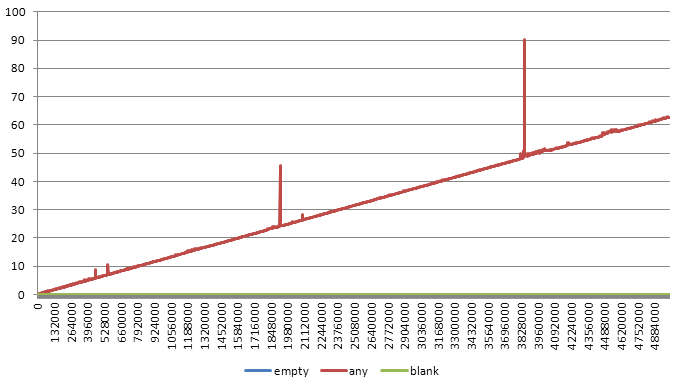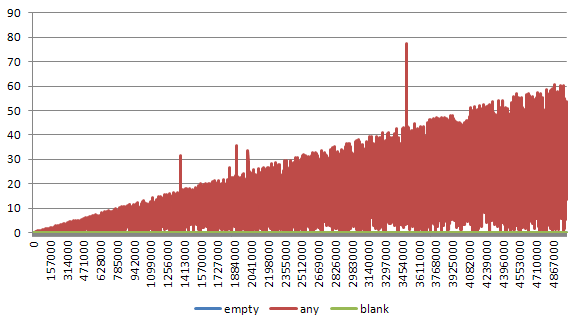I often work with junior programmers and somehow they tend to use syntax like this:
return unless array_data.any? # or do something if array_data.any?
And there’s almost nothing wrong with it, as long as you don’t work with huge arrays.
Here’s a difference in speed between empty?, blank? and any? with different array sizes (worse scenario):
Image may be NSFW.
Clik here to view.
Why any? is so slow with bigger arrays? Well, basically because it iterates through the whole the collection and checks if there’s at least one non-false and non-nil element (when no block given). Of course it will stop with the first non-false value, but we were pessimistic and we assumed that there are no elements like that. Many developers assume that any? answers the: “is there anything in the array” question, when it really answers: “is there at least one non-false and non-nil element in the array”. And this can make huge difference with bigger arrays.
Of course if we decide to have a true-like value in a random place of an array, things look a bit different:
Image may be NSFW.
Clik here to view. More or less it looks randomly, but you can see a general pattern – the more elements there are, the longer it can get.
More or less it looks randomly, but you can see a general pattern – the more elements there are, the longer it can get.
Conclusion: Using any? to determine, if there’s anything in the array can have a huge impact on your code performance if you work with bigger arrays. And even if you don’t, having bad habits is not a good idea.
The post Empty? vs blank? vs any? – why you should not use any? to test if there’s anything in the array appeared first on Running with Ruby.
